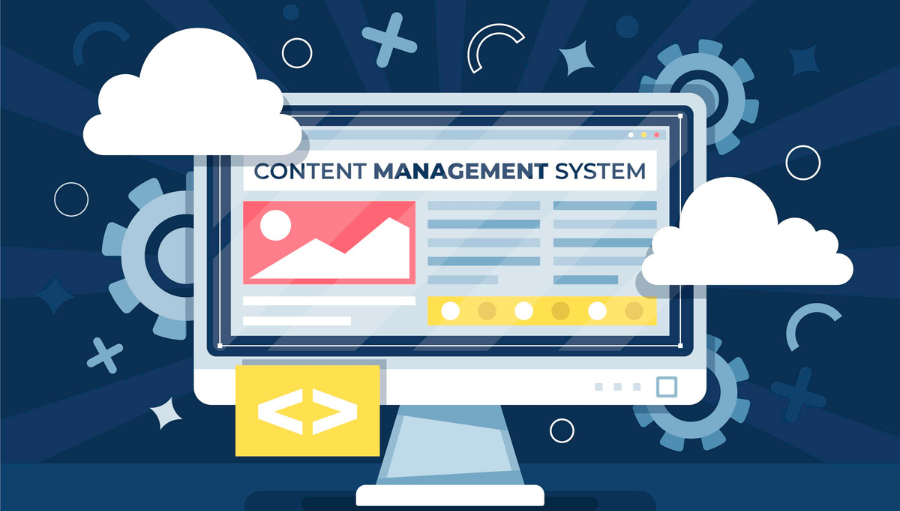Incorporating relevant keywords and best practices to enhance visibility in search engine results, ensuring that content is easily discoverable by target audiences.
Utilizing images, videos, infographics, and other multimedia elements to enrich the content and enhance user experience, making information more accessible and appealing.
Strategically placed CTAs that encourage users to take specific actions, such as signing up for a newsletter, downloading a resource, or making a purchase.
Structuring content with headings, bullet points, and short paragraphs to improve readability and navigation, making it easier for users to digest information.
Consistently updating content to keep it relevant and accurate, which can help improve SEO rankings and maintain audience interest.
Including social media buttons that allow users to easily share content across their networks, expanding reach and increasing engagement.
Content Management Systems (CMS) are software platforms that enable users to create, manage, and modify digital content on websites without requiring extensive technical knowledge. They provide an intuitive interface for organizing various types of content, including text, images, and multimedia, allowing users to easily publish and update information. Popular CMS options, such as WordPress, Joomla, and Drupal, offer a range of customizable templates and plugins to enhance functionality and user experience. By streamlining the content creation process, a CMS empowers businesses and individuals to maintain an engaging online presence, optimize their sites for search engines, and collaborate effectively with team members. Overall, a robust CMS is essential for efficient web management and effective digital marketing strategies.

Measuring content success is crucial for understanding the effectiveness of your digital marketing efforts and optimizing future strategies. This process involves analyzing various metrics and key performance indicators (KPIs) such as page views, engagement rates, bounce rates, and conversion rates to assess how well your content resonates with your audience. Tools like Google Analytics and social media insights provide valuable data on user behavior, allowing you to track which pieces of content drive traffic, generate leads, and enhance brand awareness. n addition to analyzing metrics like page views and engagement rates, measuring content success also involves assessing qualitative feedback from your audience through comments, shares, and surveys. This direct input can provide insights into what resonates with your readers and highlight areas for improvement. A/B testing can further enhance your understanding by comparing different versions of content to see which performs better in terms of user engagement and conversions.
By evaluating this data, you can identify trends, uncover areas for improvement, and make informed decisions to refine your content strategy, ultimately maximizing the return on investment (ROI) and ensuring that your content aligns with your business goals.
Regular updates and maintenance are essential for keeping a website relevant, secure, and functional over time. By consistently refreshing content, such as blog posts, product descriptions, and landing pages, you can ensure that information remains accurate and aligned with current trends and user needs. Additionally, updating your website’s software, plugins, and security measures protects against vulnerabilities and enhances performance. This proactive approach not only improves user experience but also positively impacts search engine rankings, as search engines favor sites that provide fresh, relevant content. Moreover, regular maintenance helps identify and resolve technical issues, ensuring that users can navigate your site smoothly. Ultimately, committing to regular updates and maintenance fosters audience trust, encourages repeat visits, and supports long-term growth.

You should consider a variety of content types, including blog posts, articles, product descriptions, videos, infographics, and case studies. The key is to choose formats that resonate with your target audience and effectively convey your message.
Regular updates are essential for maintaining relevance and SEO performance. Aim to refresh key content at least quarterly, while blog posts and news articles can be updated more frequently. Consistency is key to keeping your audience engaged.
To optimize your content for SEO, incorporate relevant keywords naturally, use descriptive headings, include internal and external links, and optimize images with alt text. Additionally, ensure your content is high-quality and provides value to readers.
There are several tools available, including content management systems , graphic design tools , SEO tools, and analytics tools to help streamline the content creation process.
You can measure content success through various metrics, including page views, time on page, bounce rates, and conversion rates. Additionally, monitor social shares and engagement metrics to gauge audience interaction and feedback. Tools like Google Analytics can provide valuable insights into performance.

We specialize in delivering tailored web solutions that cater to businesses and individuals alike, ensuring a seamless presence.